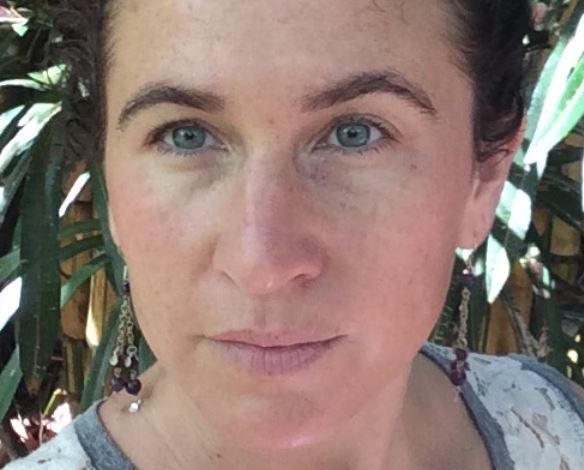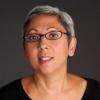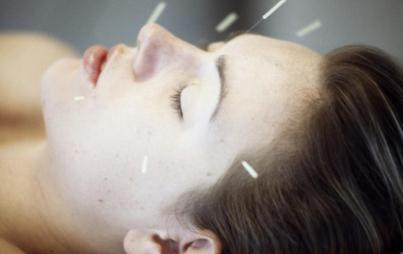
Perhaps it’s her relaxed, easy manner or her crystal-blue eyes, but Serra Chase exudes Zen calmness. Just stepping into her Brooklyn Acupuncture Project (BAP) is equally as tranquil: the perfume of herbs and the soothing sage-colored walls transport you into another world, one of nurturing and healing. Over the past nine years, Chase has treated thousands, helping them conquer everything from body pain to broken hearts, infertility and more. Also a nationally-certified herbalist and shiatsu practitioner, Chase has brought her healing ways to Asia, as well as Central and South America.
Everything she does is with heart and without hesitation. She truly embodies her credo—that acupuncture can make the world a better place.
How did you first become interested in acupuncture?
I think it was my destiny. I come from a lineage of healers—my father and grandfather were both doctors. One of my great aunts was a midwife in Ireland. I was always interested in plants and decided to study herbology at the Oregon College of Oriental Medicine. But at the time, you couldn’t just study herbs. Acupuncture was part of the four-year master’s program, and I just fell in love with it.
When did you first learn about the concept of community acupuncture?
Around 2004, a woman named Lisa Rohleder opened a place called "Working Class Acupuncture" in Portland, Oregon, where I went to grad school. She was totally on fire for it. The idea—bringing affordable acupuncture to everyone—went right to my heart. I had chills all over. It was beyond my mind; my body responded to it. I did an internship there and loved it even more.
What did you do after college?
I spent more than a year living and studying in southern China, where they saw 200 people a day in acupuncture clinics. They use it to treat advanced, complicated diseases, as well as for preventive medicine. I practiced in a small rural town, then ended up coming back to the U.S. and practicing in Greenwich, Connecticut, of all places. The irony was that in Greenwich, I was charging $200 a session but couldn’t afford to treat anyone I knew. I couldn’t even afford to treat myself!
What led to opening your own practice, and in Brooklyn, no less?
After moving to the city, I posted a notice at a Manhattan school of Oriental medicine. To my surprise, five people wanted to collaborate on an acupuncture clinic. We looked at places in Queens and all over Brooklyn, and found the perfect spot in the Gowanus section. BAP opened its doors in 2007. We outgrew our original home on the third floor in three years and moved up to the fifth floor in 2010. It feels like you’re on an urban mountaintop, far above everything.

How is Brooklyn Acupuncture Project different?
BAP offers community-based acupuncture on a sliding scale. Community-based means that our practitioners treat more than one person at a time. We have this wonderful large, open space. Everyone is suspended in gravity chairs, totally relaxed and in their own space because of the peace acupuncture brings. You barely notice there are other people in the room. Because we treat more than one person simultaneously, we can charge a much lower rate. BAP grows a little every year. At first, we didn’t even have a receptionist. We currently have nine acupuncturists on staff, a licensed massage therapist, a reflexologist, and an herbalist.
What kind of people come to you?
From all walks of life with a wide range of health issues. From body pain, depression, anxiety, and insomnia, to complex issues like chronic fatigue and Lyme disease.
Could you describe acupuncture for people who aren’t familiar with it?
Traditional Chinese Medicine offers a different diagnostic lens and treatment. A relationship develops between the client and acupuncturist. It’s hands-on healing. Practitioners take the pulse on both wrists and look at the tongue before lightly inserting thin needles into various places on the body. It’s so relaxing that many fall into a deep sleep during an acupuncture session, which generally lasts 30 to 40 minutes. You get to that beautiful space and float. It’s a sweet place. Acupuncture works on the nervous system; no matter what you’re treating—shoulder pain, polyps—the minute you insert an acupuncture needle, the autonomic nervous system calms down. That’s what regulates the heart rate, digestion, and respiratory rate.
A few years ago, you began working with indigenous people in different countries.
When I was very new at this, I apprenticed and practiced in China. I also treated people in a monastery clinic in West Bengal, India. I’ve practiced in Costa Rica and, most recently, I’ve been working with the Secoya in Northeastern Ecuador.

How did that come about?
In 2010, I got an email from a group which works with alternative types of healing and consciousnesses. I was drawn to a workshop with the Secoya, both because I’d had a beloved cat by the same name for 11 years and because it offered the opportunity to work with elders from the Amazon tribe who used different plants and healing techniques. It really intrigued me. I decided to attend the Guaria de Osa workshop with them in Costa Rica. It was life-changing in the most powerful ways. When the Secoya found out I was an acupuncturist, they asked me to treat them. Then they invited me to their home in Ecuador. I took them up on their offer the following year.
What was that like?
The Secoya live way out in the jungle. You fly to Quito, drive about 10 hours, then take a canoe. There are about 50 families who live along the Aguarico River. I stay with people a few days and move on, helping women in the kitchen, making yucca bread, tending to the children, learning about herbs, and practicing acupuncture. It’s a very rustic, simple way of life, but unfortunately, it’s changing. Oil was discovered under Secoya land and companies have started drilling. The young people work for the oil companies and want iPads and motorcycles while the elders are trying to preserve the culture. The elders are doctors of the highest caliber and I continue to learn more and more about healing just by being around them. The Secoya are some of the last real shamans left on the planet. I’m afraid their rich culture will soon die out. I’m trying to do whatever I can to preserve it. Right now, I’m holding a raffle for one of their gorgeous hand-made hammocks to help raise money for them.
Is it difficult treating people abroad?
Not at all. Acupuncture travels well. All I need are my needles and cotton balls. The injuries are different in different parts of the world. In the rainforest, I might come across a 70-year-old man with shoulder pain from swinging a machete most of his life. In Brooklyn, it’s more common to see an IT guy with Carpal Tunnel syndrome. But I find it rewarding to bring anyone relief.
Somewhere along the road, you changed your name from "Sarah" to "Serra."
To me, it’s symbolic of a positive transformation. You see, I’ve battled depression for many years. I was taking antidepressants for 17 years and decided to stop. After a very dark period in 2014, I turned the corner this January. I knew I was healing, triumphing over my depression, and chose to stay on this earth. I wanted to commemorate the rewiring of my life in a positive way. Taking the name "Serra" is symbolic of that rebirth. "Ser" is the verb "to be" in Spanish and "Ra" is the Egyptian solar deity. The energy of the sun helped me through the last year, so it seemed appropriate.
Did you ever think your life would take you where it has?
In my wildest dreams, I couldn’t have imagined this. It feels very good, very on purpose. I grew up in a pretty traditional atmosphere, about 30 minutes south of Boston, in a suburban town called Norwall. I went to a Montessori school. We were middle class and my parents had a very laissez faire, hands-off policy when I was growing up. They let me find my own way. I never expressed any interest in owning a business or being a boss. When I told my parents that I was going to open a community practice, they thought I was crazy. Nobody thought it would be successful. But it was. Now my parents are very proud. I think they’re just as surprised as I am that this worked out the way it did.
Why is acupuncture so important to general health and well-being?
Acupuncture will always help; it will never hurt. For practitioners and clients, BAP is a living example of how to make self-care a priority. I feel it’s my gift to the world, to make it part of everyone’s lives, not a privileged few. Taking care of ourselves will allow us to serve all the more in the larger community. It’s a ripple out effect. If everyone who comes in here heals a little bit, then goes out and does their thing, it creates a beautiful foundation. I truly believe acupuncture can save the world. It’s the remedy for our culture, for this time. My wish is for each and every one of us to know truly unshakable well-being and, with that vibrancy at our core, to be a source of healing in the world. I’m so privileged and honored to be part of this small yet powerful current of change. If I can just do my part to contribute to the whole, that would be amazing.



